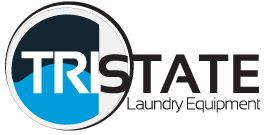Tri-State is working with
RW Martin & Sons, Inc. out of Kent, Ohio on a project at a hospital in Brockton, Massachusetts. You might be wondering how a partnership between a company in North Carolina and a company in Ohio came to be. Well,
Kevin Lawson and Shawn Martin met while serving together on the board for the Textile Care Allied Trades Association (
TCATA), the two developed a friendship based on a mutual love of all things laundry and dry cleaning equipment related, and the rest is history.
Tri-State spent approximately 4 weeks removing 3 – 800 pound, 2 – 400
pound, and 5 - 150 pound washing machines along with feeders, ironers,
folders, an immense soil sorting system, laundry trolley system, all
tanks, pump stations, and air compressors. Our knowledgeable combined
staff ensured that as much as could be salvaged or re-used would be.
Much of the equipment will be scrapped and recycled, while the remaining
will go into storage until the renovations are complete.
Soil Sorting System before removal
Soil Sorting System in the process of being removed
Soil Sorting System removed in 4 ½ days
400 pound washing machine being prepped for removal
Removing the mounting bolts of the washing machine
Washing machine being removed for scrap
The renovation will take approximately 1 – 1 ½ years to complete and after that the stored equipment along with new, up-to-date equipment with the latest technology will be installed. We are so excited to be a part of this project and look forward to sharing more photos as it continues.
Not only does
Tri-State Laundry Equipment repair, sell, and service
new and used dry cleaning and laundry equipment, as you can see, we can also clear out old and dated equipment, leaving the space a fresh, clean, blank slate ready for the latest and greatest. If you need help updating your facility, give us a call at 866-885-5218.
















